43 introduction to bonding worksheet
PDF Introduction to Ionic Bonds I. Ionic Bonds III. Metallic ... Introduction to Ionic Bonds The forces that hold matter together are called chemical bonds. There are four major types of bonds. We need to learn in detail about these bonds and how they influence the properties of matter. The four major types of bonds are: I. Ionic Bonds III. Metallic Bonds II. Covalent Bonds IV. Introduction To Chemical Bonding Worksheet Answers ... Assessment Chemical Bonding Introduction to Chemical Bonding Learn with flashcards games and more for free. Determine if it is an ionic bond or a covalent bond. NFHS Honors Chemistry Chemical Bonding Unit. UNIT 6 - CHEMICAL BONDING Notes Worksheets - Honors 2 B. A nuclei c isotopes b inner electrons d lewis structures 2.
PDF A Guide to Chemical Bonding - Mindset Learn Worksheets and questions based on video lessons can be used as short assessments or exercises ... Introduction to Chemical Bonding The focus is on the concept of generating new substances with new physical and chemical properties on a microscopic level. The evidence on the Periodic Table is
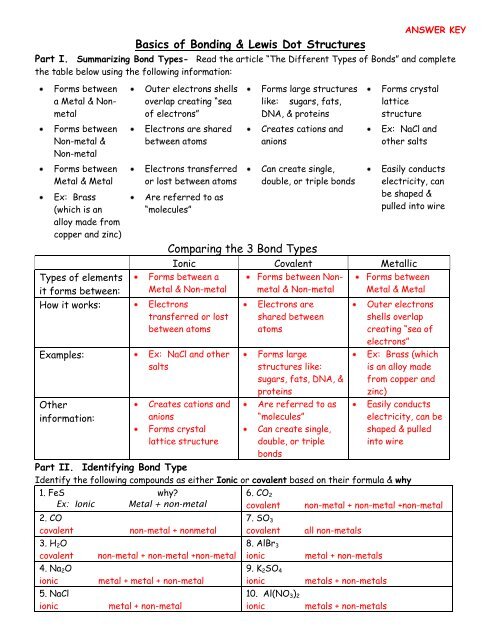
Introduction to bonding worksheet
PDF Introduction to Bonding(5.1) & Ionic Bonding(5.2) Pre-AP Chemistry—Worksheet #1 Date Introduction to Bonding(5.1) & Ionic Bonding(5.2) 1. What type of atoms combine to form a covalent bond? 2. What type of atoms combine to form an ionic bond? 3. What type of atoms combine to form a metallic bond? 4. State the Octet Rule. 5. How does a covalent bond differ form an ionic bond? 6. PDF Chemistry A Bonding - Weebly Worksheet #4: Introduction to Covalent Bonds A covalent bond is formed between nonmetal atoms. The nonmetals are connected by a shared pair of valence electrons. Remember, nonmetals want to gain valence electrons to reach a stable arrangement. DOC Chemistry Worksheet Introduction to Chemical Bonding Name Worksheet #2: Introduction to Covalent Bonds A covalent bond is formed between nonmetal atoms. The nonmetals are connected by a shared pair of valence electrons. Remember, nonmetals want to gain valence electrons to reach a stable arrangement.
Introduction to bonding worksheet. PDF Worksheet: Introduction to Bonding Name In a polar covalent bond, the electrons are shared _____. In a nonpolar covalent bond, the electrons are shared _____. What type of bond will form between the following pairs of atoms? H and F Na and O Cl and Cl Fe and S Si and O Mg and O PDF Chemical Bonding - Kyrene School District Introduction to Bonding Make sure your answers are in your own words! 1. What is a chemical Bond? A chemical bond is an attraction between atoms in order to create compounds made of two or more atoms. 2. Why do most atoms form chemical bonds? Atoms form bonds in order for each atom to have a complete outer shell, and to become stable and ... Introduction To Chemical Bonding Worksheet Answers ... Unit 6 chemical bonding notes worksheets honors 1 introduction to chemical bonding i. Cs is a metal so it is likely to form ionic compounds with a nonmetal. Mutual electrical attraction between the nuclei and valence e of different atoms that binds the atoms together b. What is a chemical bond. DOC Come Together: Chemical Bonding Worksheet Which of the following molecules has the shortest bond length? a) N2. b) O2 c) Cl2 d) Br2 e) l2 Which of the following has zero dipole moment (i.e. is non-polar molecule)? a) H2O b) NO21- c) CCl4 d) SO3 2- e) HF Ionic bonds are the electrostatic attraction between oppositely charged atom. What determines their ionic strength?
PDF Worksheet Introduction To Bonding Answers Bonding Worksheet #1: Introduction to Ionic Bonds. The forces that hold matter together are called chemical bonds. There are four major types of bonds. We need to learn in detail about these bonds and how they influence the properties of matter. The four major types of bonds are: I. Ionic Bonds III. Chemical Bonding Worksheet Answers - Worksheet Bunny Chemical bonding worksheet answers. A a chemical bond between atoms results from the attraction between the valence electrons and of different atoms. Science worksheets and study guides 8th grade. In ionic bonding the atom of the element is bonded to an atom of the opposite sign. ... introduction to chemical bonding worksheet answers, ... PDF Introduction to Bonding BONDING Notes bonding Introduction to Bonding • A good predictor for which type of bonding will develop between a set of atoms is the difference in their electro-negativities. - Remember, electro-negativity is a measure of the attraction an atom has for e-s after developing a bond • The more extreme the difference between the two atoms, the less Introduction to Bonding | Introduction to Chemistry Chemical bonds. Chemical bonds are the connections between atoms in a molecule. These bonds include both strong intramolecular interactions, such as covalent and ionic bonds. They are related to weaker intermolecular forces, such as dipole-dipole interactions, the London dispersion forces, and hydrogen bonding. The weaker forces will be discussed in a later concept.
DOC Chemistry Worksheet Introduction to Chemical Bonding Name Bonding Worksheet #1: Introduction to Ionic Bonds. The forces that hold matter together are called chemical bonds. There are four major types of bonds. We need to learn in detail about these bonds and how they influence the properties of matter. The four major types of bonds are: I. Ionic Bonds III. Metallic Bonds. II. Covalent Bonds IV. PDF WORKSHEET 5.1: BONDING INTRODUCTION - Weebly Chemistry 20 Worksheets 1 WORKSHEET 5.1: BONDING INTRODUCTION NAME: _____ DATE: _____ 1. Which groups of elements in the periodic table of elements will form a. network covalent compounds - compound made of C and Si DOC Come Together: Chemical Bonding Worksheet Introduction to Bonding. ... Come Together: Chemical Bonding Worksheet Name Block Date _____ Introduction to Bonding Write your own definition of a chemical bond and explain why most atoms form che Use your own words! _____ Bonding Comparison Chart Chemical Bonding Worksheet Answers - Worksheet Smart Chemical bonding worksheet answers. Chemical bonding section 1 short answer answer the following questions in the space provided. Showing top 8 worksheets in the category chemical bonding answer key. In ionic bonding the atom of the element is bonded to an atom of the opposite sign. Covers the following skills.
Chemistry 501: Introduction to Bonding | Georgia Public ... Intro to Bonding Worksheet Chemistry: A Study of Matter Episode Semester 1 Chemistry is the study of matter, its composition and the changes it undergoes. During this semester, you will be introduced to the scientific method used to study matter and will be given the mathematical tools you will need for the remainder of the course.
DOC Chemistry Worksheet Introduction to Chemical Bonding Name Worksheet #4: Introduction to Covalent Bonds A covalent bond is formed between nonmetal atoms. The nonmetals are connected by a shared pair of valence electrons. Remember, nonmetals want to gain valence electrons to reach a stable arrangement.
DOC Come Together: Chemical Bonding Worksheet - Schoolwires Introduction to Bonding. 1. What is a chemical bond? 2. Why do most atoms form chemical bonds? Bonding Comparison Chart ... When you're finished, save a copy of this worksheet on your teacher's flash drive. Delete your file from the Desktop. You may save it to a floppy disk if you wish. Chemical Bonding. Title: Come Together: Chemical ...
Drawing ionic bonds worksheet - xdfeees.us Introduction To Chemical Bonding Worksheet 61 Ans In 2020 Covalent Bonding Worksheet Covalent Bonding Chemical Bond . Ca and Cl b. Copy. thescienceteacher. One type of chemical bond, called an ionic bond, is the force of attraction between oppositely charged species (ions). When constructing a Lewis diagram, keep in mind the octet rule, which ...
DOC Chemistry Worksheet Introduction to Chemical Bonding Name Worksheet #2: Introduction to Covalent Bonds A covalent bond is formed between nonmetal atoms. The nonmetals are connected by a shared pair of valence electrons. Remember, nonmetals want to gain valence electrons to reach a stable arrangement.
PDF Chemistry A Bonding - Weebly Worksheet #4: Introduction to Covalent Bonds A covalent bond is formed between nonmetal atoms. The nonmetals are connected by a shared pair of valence electrons. Remember, nonmetals want to gain valence electrons to reach a stable arrangement.
PDF Introduction to Bonding(5.1) & Ionic Bonding(5.2) Pre-AP Chemistry—Worksheet #1 Date Introduction to Bonding(5.1) & Ionic Bonding(5.2) 1. What type of atoms combine to form a covalent bond? 2. What type of atoms combine to form an ionic bond? 3. What type of atoms combine to form a metallic bond? 4. State the Octet Rule. 5. How does a covalent bond differ form an ionic bond? 6.
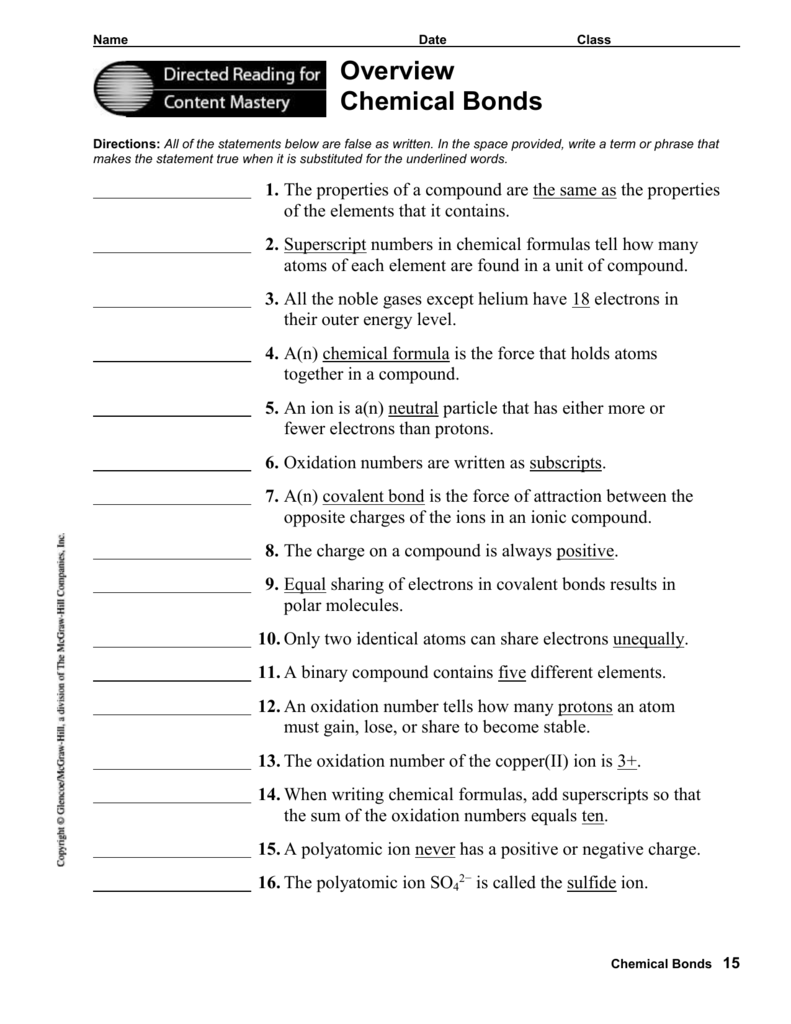
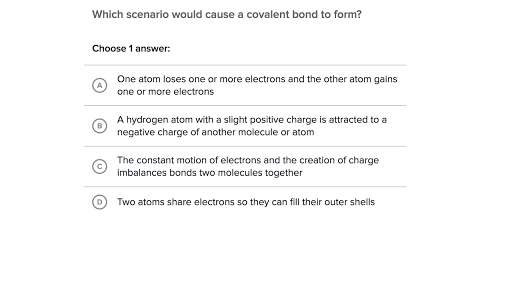




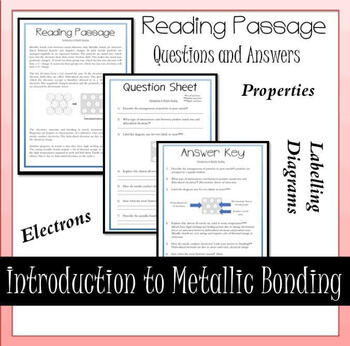

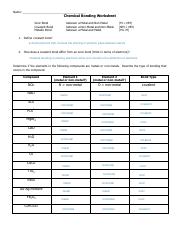
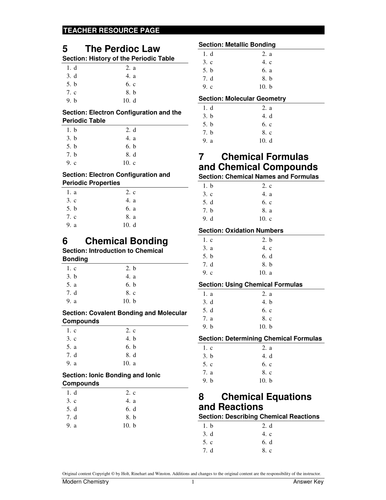

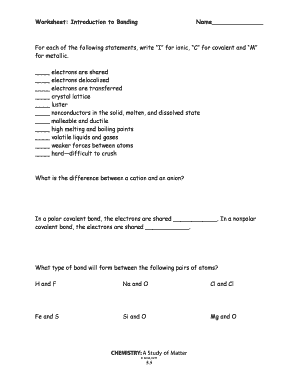

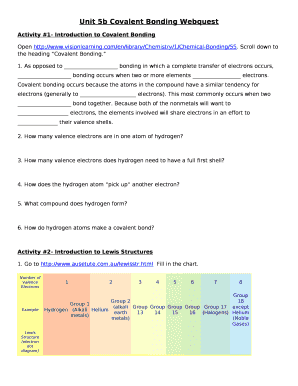



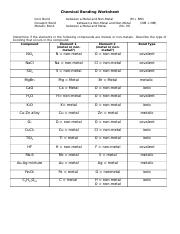
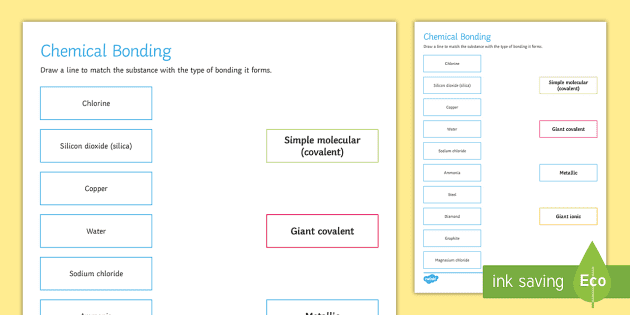

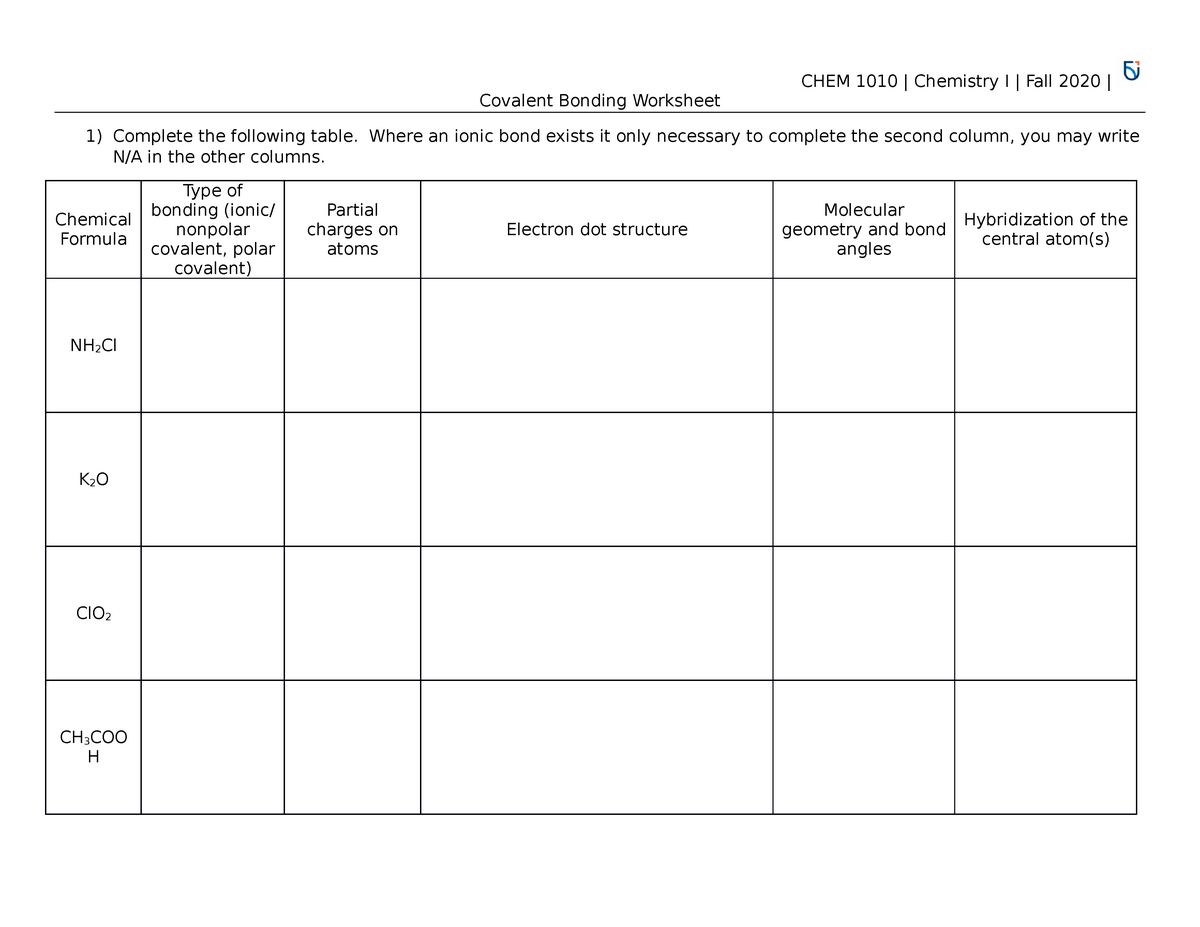




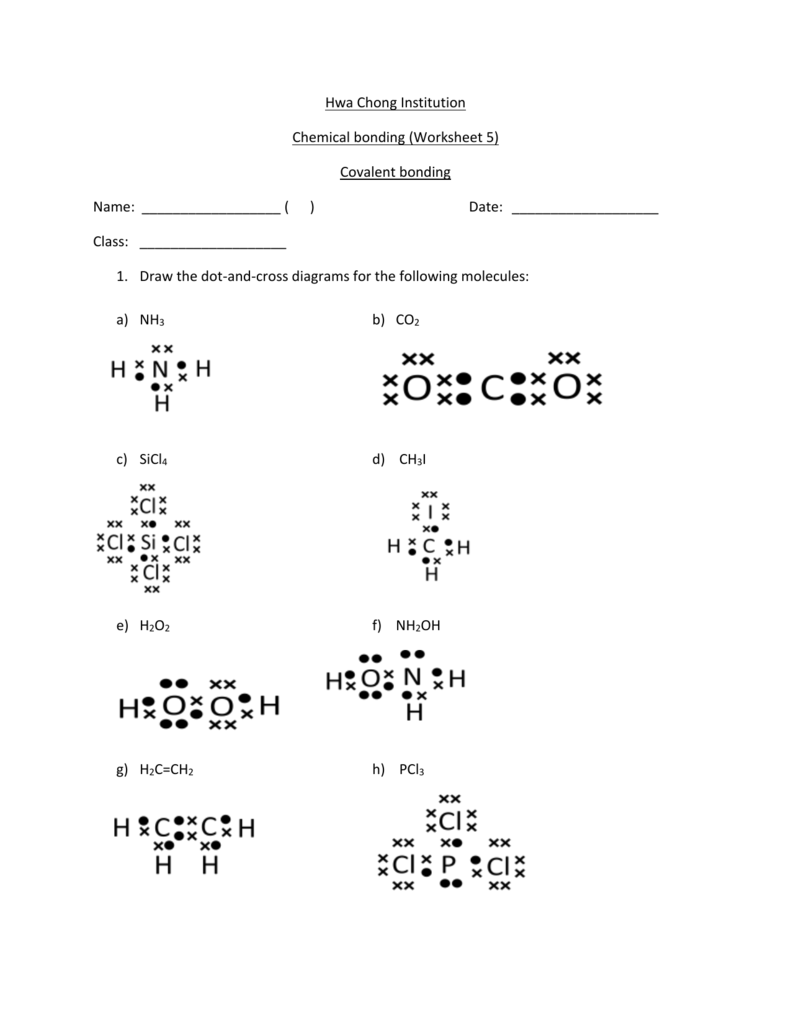

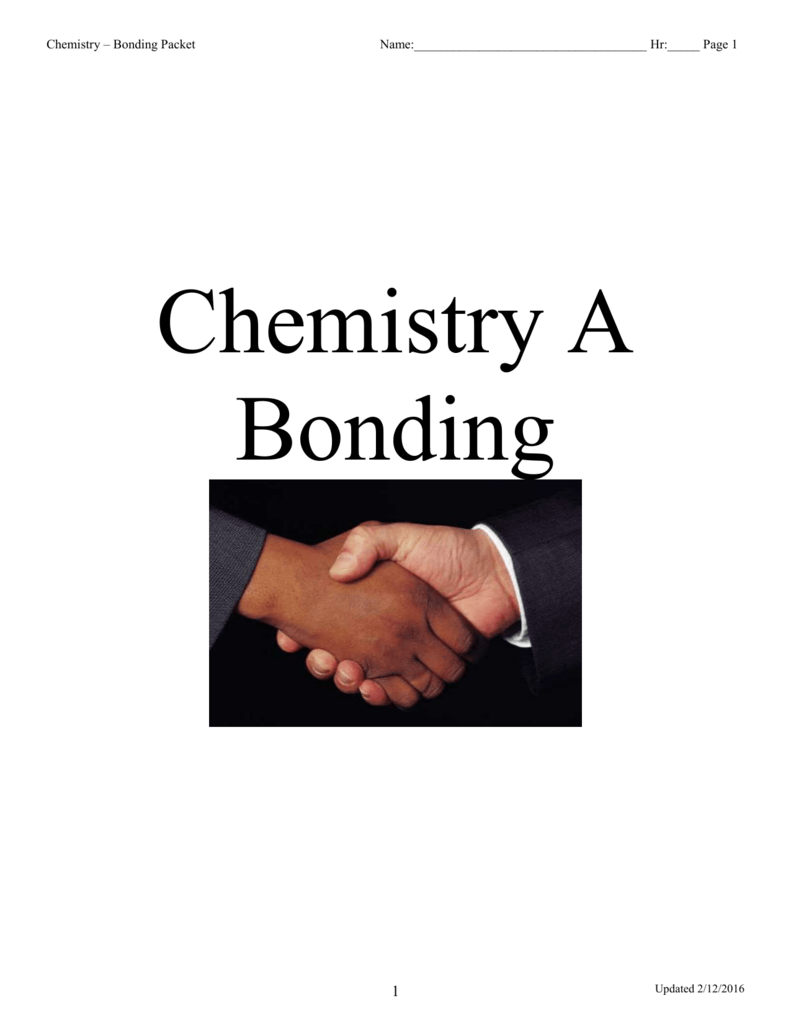
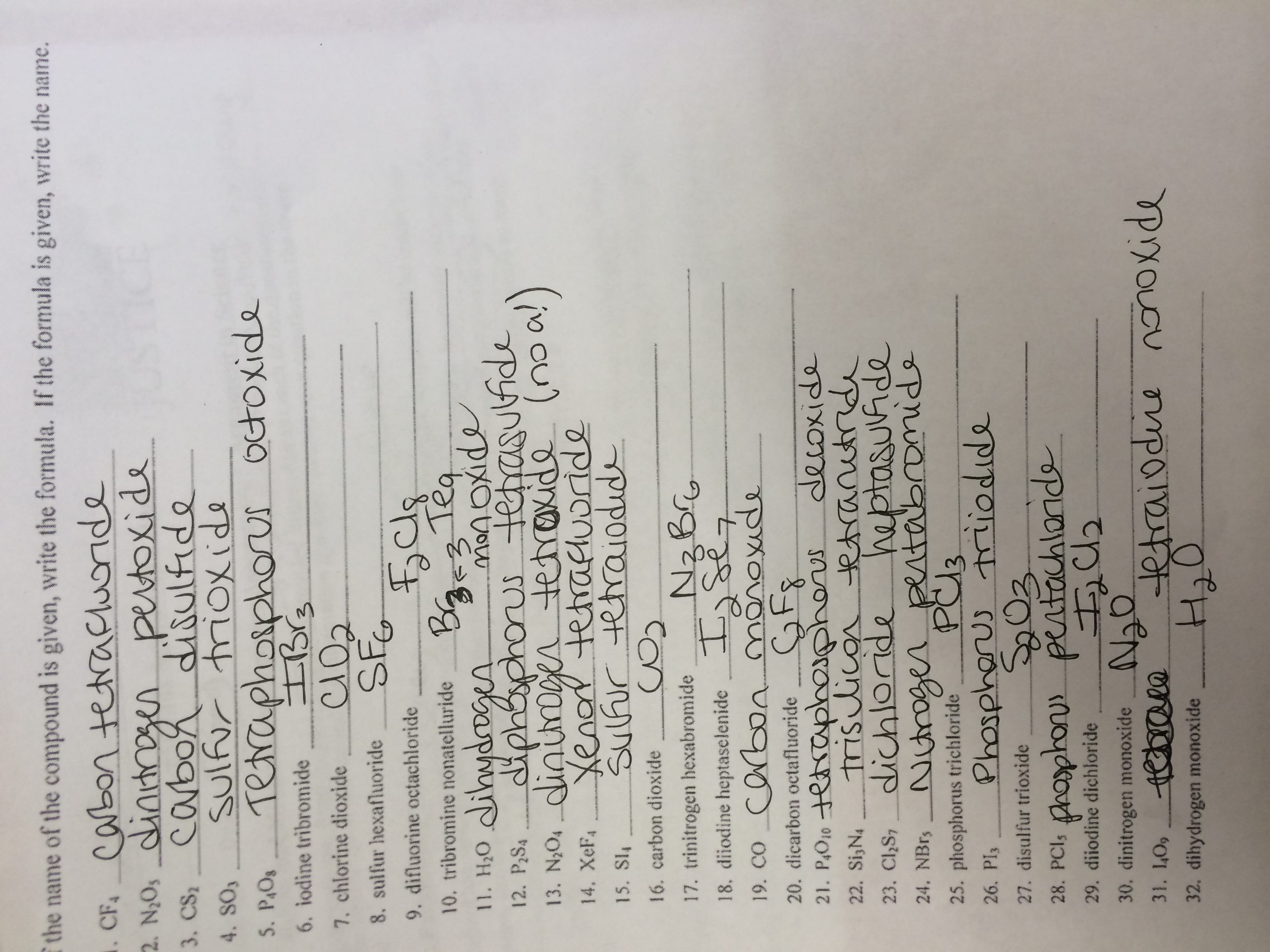


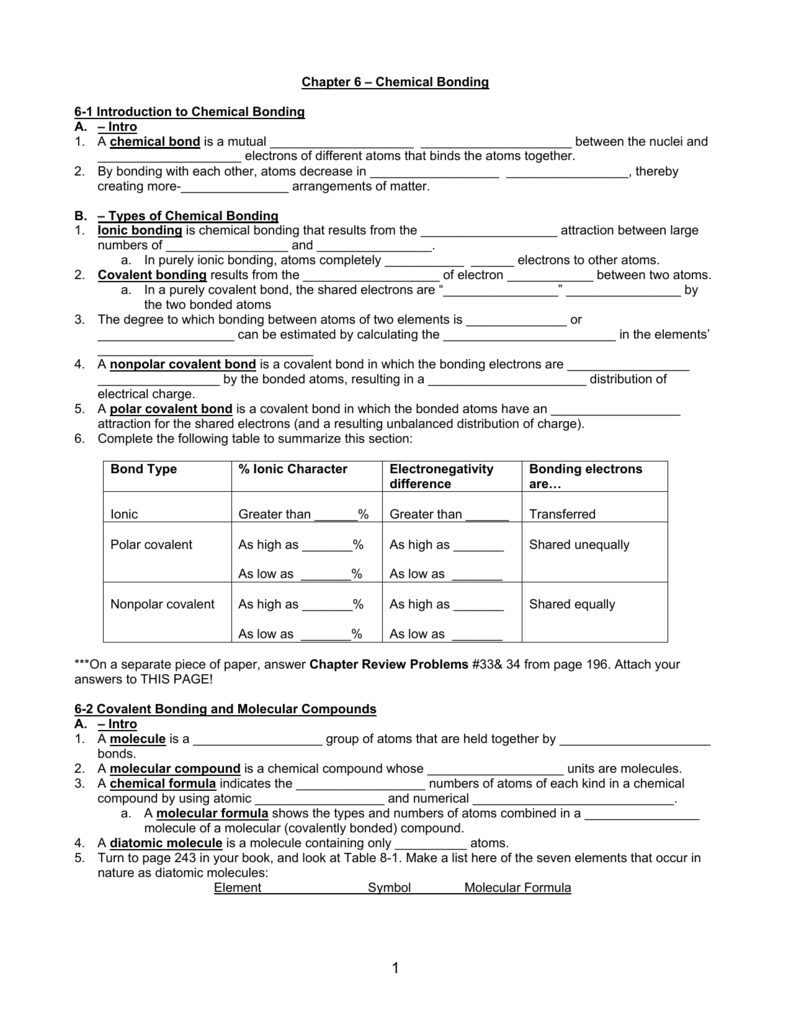


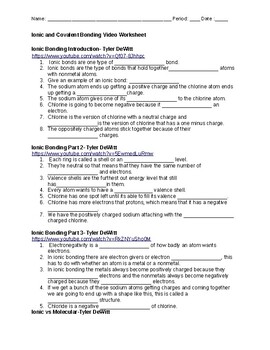


0 Response to "43 introduction to bonding worksheet"
Post a Comment